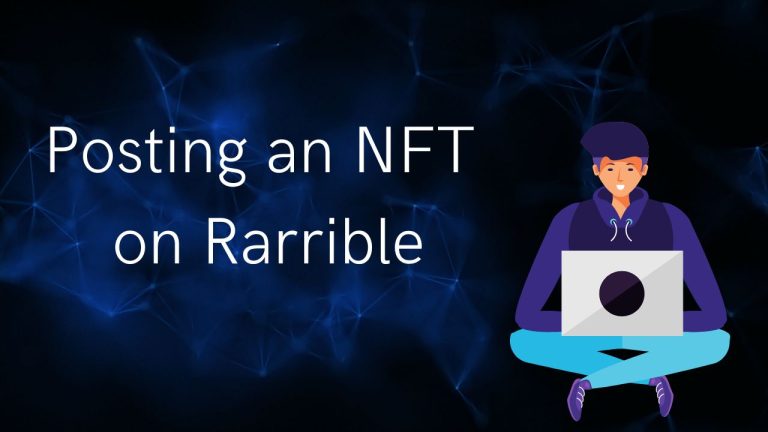What effects do NFTs have on the environment?
Increasing awareness of the harm and climate change caused by technological innovation has prompted industry experts and artists to question the environmental implications of non-fungible tokens or NFTs. Even though these digital asset types have increased significantly over the past year, it is still too early to gather sufficient data to assess the environmental risks NFTs pose. Even while certain figures are beginning to surface, none of this data has been independently validated and cannot yet be believed.
Unique and one-of-a-kind digital assets are produced via blockchain-based nonfungible token technology. Digital reproductions of images, videos, and musical works are infinitely reproducible, but blockchain smart contracts guarantee that a certain work of art or work of media, for example, is the only instance of that object that exists.
There is also no requirement for third parties to verify the user’s identity because the technology facilitates transactions in a trustless environment.
These characteristics offer NFTs value and serve as the impetus for their growth throughout numerous industries, particularly the arts. Artists who have made environmental effects a primary concern include those who have taken various actions to combat climate change and reduce their NFT carbon footprint.
NFTs are harmful to the environment?
Digital artist Beeple, whose work “Every Day: The First 5000 Days” earned an astounding $69 million offer at Christie’s, believes that NFTs will have a more sustainable future and has pledged that his works would be carbon neutral. He thinks he can offset the emissions from his NFTs by putting some of his money towards green energy, environmental protection, and the creation of CO2 emission-reducing technology.
Using a simple tool like Offsetra to help artists evaluate their footprint, Beeple may find that he has donated $5000 to offset his environmental impact and equalize the emissions from one collection. Beeple and other well-known musicians agreed to sell carbon-neutral NFTs and generate money for the Open Earth Foundation. The nonprofit organization encourages collaboration and sustainable development via art and education.
These particular monies were used to advance blockchain technology for environmental accountability. Each artist and piece of art was given 60 carbon offsets, which promised to make up for their NFT footprint and have a net-positive influence on the climate.
What is an NFT’s carbon footprint?
A variety of estimates can help us gain a basic idea of the carbon footprint of an NFT, even if it is difficult to determine the ecological cost of cryptographic art with full confidence. For instance, a single-edition piece of art on Ethereum weighs 220 pours (100 kg) of CO2, which is equal to a one-hour trip.
Memo Akten, a digital artist, examined roughly 18,000 NFTs and discovered that the carbon footprint of a typical NFT is greater than a month’s worth of typical power use for a person living in the European Union.
As new production techniques were made possible by technological advancement during the industrial revolution, we can trace the influence of technology on the environment to that time.
As technology advanced, environmental impact increased as well. In more recent years, data centers and crypto mining have been discovered to be particularly damaging to the environment.
Organizations like Google and Amazon use data centers, which are networks of connected computers, to store, process, and distribute massive amounts of data remotely.
Our information travels via one of these data centers when we send an email or a WhatsApp message, and they use a lot of energy to run effectively and keep the equipment cool.
One percent of the world’s energy needs are met by data centers. The pandemic’s increased internet use is thought to have contributed to a rise in emissions of up to 3.2 million metric tonnes of carbon dioxide equivalent. Consider one metric tonne as the estimated weight of a car or as the amount of CO2 created by traveling from San Francisco to Atlanta to comprehend the effects of such an evaluation.
Energy is used with every digital operation. The worldwide banking sector, for instance, uses around 263.72 Terawatt hours of electricity annually, according to a NASDAQ research paper.
Contrarily, Bitcoin (BTC), the most well-known but equally energy-intensive blockchain and cryptocurrency, use somewhat less than half of that.
Based on the proof-of-work mining method, the majority of NFTs are traded and stored in the Ethereum network.
Since PoW is the consensus algorithm type that consumes the most energy, climate scientists begin the conversation on the environmental impacts of NFTs. Due to its second-highest level of stability and dependability after Bitcoin, digital artists use Ethereum for the selling of their works of digital art.
Also, it was designed to employ smart contracts to exchange data other than cryptocurrency, making it an appealing platform for a variety of uses.
How dangerous are NFTs kept on Ethereum?
Bitcoin mining uses more than twice as much energy as Ethereum mining. According to the most recent reliable estimate from 2018, the platform consumes almost the same amount of electricity as Iceland.
According to reports, Ethereum uses over 44.94 terawatt hours of electricity annually, which is comparable to the electricity used by countries like Hungary and Qatar. Comparable to Sudan’s carbon footprint, it contributes about 21.35 metric tonnes of carbon dioxide to the atmosphere.
Each Ethereum transaction is carried out using Ether (ETH) as gas, which is recorded on the blockchain and varies in percentage depending on the volume of transaction data. Due to the numerous transactions involved in the creation of NFTs, such as coinage, bidding, trading, and ownership transfer, they are data-heavy digital goods. Transparency in transactions enables a simple evaluation of an NFT’s footprint.
The question is whether or not NFTs have a major impact on the emissions produced by Ethereum mining. Certainly more energy-intensive than a straightforward Ethereum money transfer, Ethereum mining was already taking place and degrading the environment before the invention of NFTs. We could use a train or airplane running regardless of how many passengers it has as a comparison.
On the other side, if more people produced, traded, and stored NFTs, more energy-intensive transactions would need to be made, which would result in more carbon emissions. In essence, it is difficult to determine how much NFTs harm the environment and Ethereum transactions.
Energy usage for proofs of labor versus proofs of stake
With the aid of blockchain technology, NFT investors can purchase, sell, or store digital assets directly from one another. These transactions, nevertheless, are now tech-required and may be tricky to carry out.
Because of this, artists that want a simple and smooth experience frequently choose markets like Opensea or Rarible. Nevertheless, these and the majority of other marketplaces are built on the energy-inefficient proof-of-work Ethereum blockchain, which has seen exorbitant fees since NFTs began to populate the system.
Proof-of-stake blockchains, which use 99% less energy than PoW blockchains and are associated with more environmentally friendly NFTs, have become increasingly viable alternatives to PoW blockchains. These blockchains are, however, viewed as riskier because they are typically more recent on the market and more prone to security breaches.
This is the key factor making these networks less appealing to art buyers who want to make sure their purchases won’t vanish or stop being maintained in the future. However, compared to their less viable alternatives, these platforms do not yet have a sizable volume, making it more challenging for artists to make a quick purchase or sale.
Future adoption of these platforms and the development of more environmentally friendly and open marketplaces may increase as more artists become aware of alternate, more energy-efficient choices. Algorand, Tezos, Polkadot, and Hedera Hashgraph are some of the most well-known proof-of-stake chains.
Years ago, Ethereum declared that its Ethereum 2.0 update will eventually implement proof-of-stake. Ethereum’s energy usage would substantially decrease in this fashion, which is something many artists hope will happen soon.
Some NFT systems, like Flow, for instance, employ private blockchain technology and are already fully operational. Private blockchains, on the other hand, are extremely centralized and deviate from the true blockchain concept, suggesting that the decentralized system does not need the assistance and confidence of an intermediary.
What more actions may be taken to reduce the carbon footprint of NFTs?
Ethereum could move to the proof-of-stake consensus process, which would significantly reduce its energy use. Yet, despite years of maintenance by the platform’s development team, the process has to occur, which raises serious concerns regarding this accomplishment.
The layer two technologies that Ethereum developers build on top of the present blockchain may reduce costs and carbon emissions. Since all transactions occur off-chain, these systems have the potential to significantly reduce energy consumption by eventually replacing the wasteful proof-of-work algorithm.
Like the Lightning Network, which is widely regarded as Bitcoin’s payment system and is a protocol built atop layer two of the blockchain. Since it does not reliant on the base chain’s proof-of-work consensus algorithm, it is scalable and ecologically friendly.
The Lightning Network process can be used by individuals or groups interested in trading NFTs to set up a second layer channel where they can conduct practically limitless trading until they are ready to settle all outstanding transactions back on the PoW blockchain foundation layer or layer one. By doing this, a significant amount of data-intensive transactions that require a lot of energy to complete will be avoided in favor of merely the net outcome being time-stamped on the blockchain.
The current infrastructure of power generators has not yet been completely replaced by renewable energy sources, so it is not a good idea to do so. The energy produced by renewable sources is still exceedingly rare and valuable, according to climate experts and opponents of blockchain technology and cryptocurrencies, and it may be used for more essential purposes like heating and lighting.
FAQS:
Are NFTs morally wrong?
The December issue of the Journal of Responsible Technology features new research that explores non-fungible tokens, or NFTs, and blockchain technology from an ethical perspective. It was discovered that there are no moral uses for NFTs that would support their use and trade.
Why utilize so much power in NFTs?
NFTs consume so much energy because using them requires solving millions upon trillions of tiny puzzles. A technique known as proof of work is used by several of the major NFT networks, including Ethereum, to make, trade, and buy NFTs.
Why do NFTs use so much power?
Because using them entails resolving countless trillions of little puzzles, NFTs utilize a lot of energy. Several of the largest NFT networks, including Ethereum, employ the proof of work method to create, exchange, and purchase NFTs.







